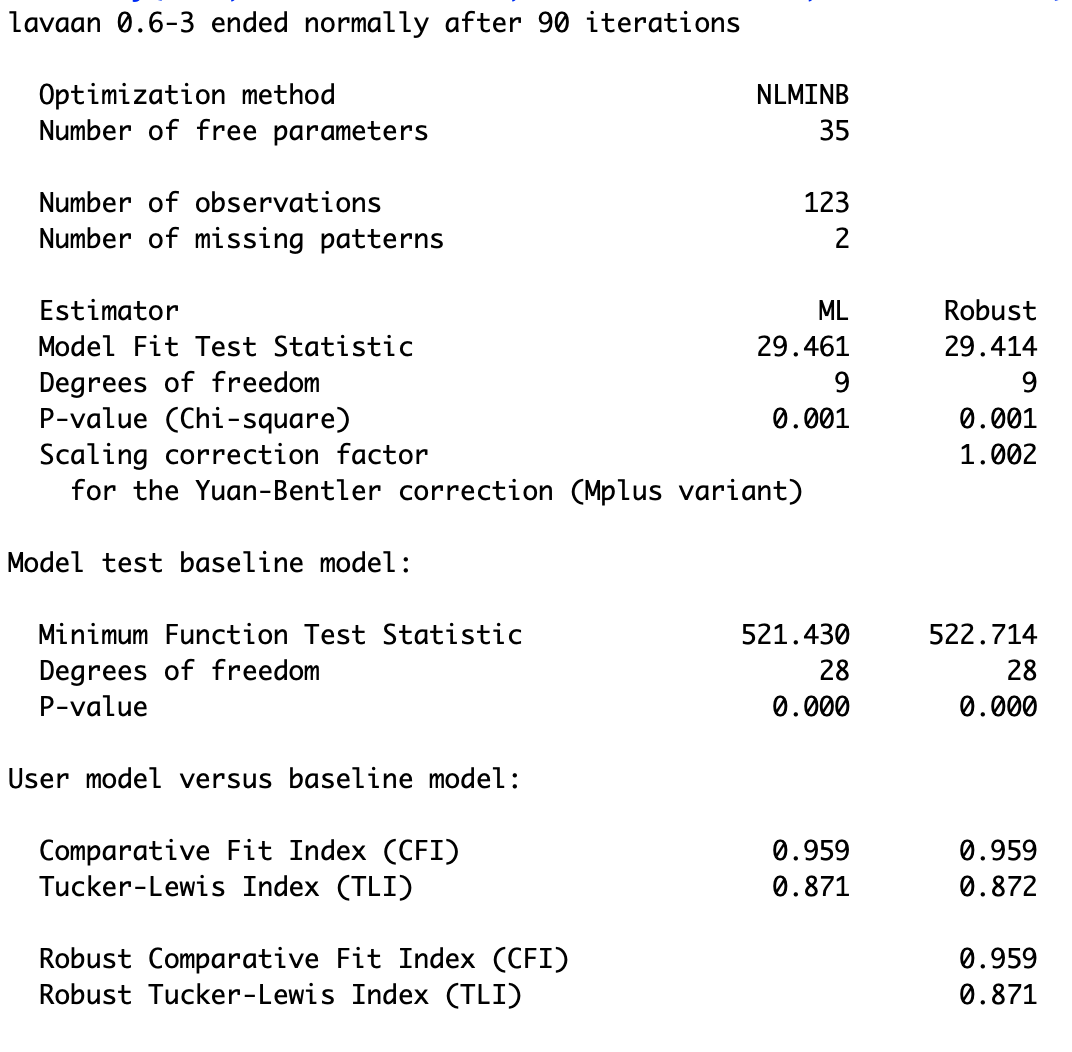Hannah
Feb 27, 2019, 5:23:11 AM2/27/19
to lavaan
Dear all,
I am running a pathway analysis in Lavaan and am trying to compute post-hoc power using G*Power 3. Here is the model I have run and part of the output:
model2 <- '
# regressions
AASP_SAvo ~ SRS_T + BPQ_T
AASP_SSens ~ SRS_T + BPQ_T
BPQ_T ~ SRS_T
TAS_T ~ SRS_T + AASP_SAvo + AASP_SSens + BPQ_T
IUS_comp ~ SRS_T + TAS_T
CERQ_Negative ~ TAS_T
LSAS_T ~ SRS_T + AASP_SAvo + AASP_SSens + TAS_T + CERQ_Negative + IUS_comp
# correlations
AASP_SAvo ~~ AASP_SSens
'
fit2 <- sem(model2, data = Dat_final.cep, estimator = "MLR", missing = "fiml", fixed.x = F)
summary(fit2, fit.measures = T, standardized=TRUE, modindices = T)
To compute post-hoc power using G*power 3 (in χ2 tests - Generic χ2 test) you need the following information 1) Non-centrality parameter 2) a err prob and 3) Df. The a err prob = .05, the df from my model above is 9, however, I am unsure which statistic refers to the non-centrality parameter?
I know that the non-centrality parameter = normal theory weighted least squares χ2 - df of your model. Does this mean that I have to run a model with the WLS estimator to get the normal theory weighted least squares χ2 to calculate power in G*power or is there something I am missing from my output above?
Also any alternative methods for calculating post-hoc power are welcome!
Thanks!
Hannah
Terrence Jorgensen
Feb 28, 2019, 10:23:54 PM2/28/19
to lavaan
I am unsure which statistic refers to the non-centrality parameter?
This isn't a software question, so SEMNET is more appropriate.
X2 - df is generally the estimate of the NCP, but post hoc power analysis using your observed sample stats is pretty useless for telling you anything more than whether your p value was less than your alpha level. Power analysis is more meaningful when you base the effect size (NCP) on a meaningful criterion, such as specifying as a set of population parameters that differs from your null hypothesis to the minimal meaningful degree.
Terrence D. Jorgensen
Assistant Professor, Methods and Statistics
Research Institute for Child Development and Education, the University of Amsterdam
Hannah
Mar 5, 2019, 7:29:46 AM3/5/19
to lavaan
Thanks Terrence. That's really helpful!
Reply all
Reply to author
Forward
0 new messages

